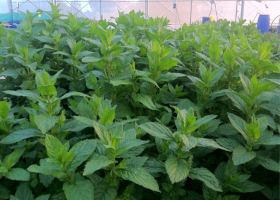Medicinal and Aromatic Plants (MAPs): The Connection between Cultivation Practices and Biological Properties
A special issue of Agronomy (ISSN 2073-4395).
Deadline for manuscript submissions: closed (28 February 2022) | Viewed by 44469

Special Issue Editors
Interests: aromatic plants and vegetable cultivation; development of strategies for plant nutrition and response to abiotic stress; soil-less culture, substrates and hydroponics; postharvest storage and processing of medicinal and aromatic plants; essential oil analysis and biocidal activity; evaluation of natural products
Special Issues, Collections and Topics in MDPI journals
Interests: chemistry of natural products; analytical methods; NMR; GC-MS; terpenes (iridoids, sesquiterpene lactones, and triterpenes); phenolics (flavonoids, phenols, phenolic acids, and lignans); essential oils; ethnopharmacology; history of pharmacy
Special Issues, Collections and Topics in MDPI journals
Interests: natural products; chemical ecology; semiochemicals; microbial toxins; IPM; insect attractants; pheromones; kairomones; natural metabolites formulation; slow release sytems
Special Issues, Collections and Topics in MDPI journals
Special Issue Information
Dear Colleagues,
Cultivation management is essential to balance the fundamental parameters for medicinal and aromatic plants (MAPs) as biomass and the production of high-quality essential oils and extracts with remarkable properties.
With the world’s population increasing rapidly, the production of food will have to double, biodiversity will be eliminated, and water quantity and quality will be reduced. Moreover, there will be no new croplands to cultivate, and the ones already in use will be deteriorated through over/bad fertilization. Medicinal plants and their essential oils and other extracts comprise more than just a modern fad. Apart from being a source of food, many MAP species are used as non-food industrial products, pharmaceuticals, herbal health products, cosmetics, plant protection products, etc. For their industrialization, cultivations should be standardized in a way to produce material that exhibits repeatable attributes and components. This could be accomplished by defining the proper nutrient needs for each species along with proper cultivation practices. Research activities are needed to determine the needs of each crop, industrial or edible, in order to secure plant uniformity connected to the cultivation practice applied.
Τhis Special Issue will cover research aspects related to the cultivation practices of medicinal and aromatic plants (extensive and intensive cultivations, soil, alternative substrates, hydroponics, abiotic and biotic stress, etc.) and how they can affect the biomass production (fresh or dried), nutritional value, and biological properties (antioxidant, antibacterial, insecticidal, cytotoxic, repellent, attractant, etc.) of various medicinal plant extracts. Research on the effects on essential oil quality and quantity is also welcome.
Dr. Antonios Chrysargyris
Prof. Dr. Helen D. Skaltsa
Dr. Maria Konstantopoulou
Guest Editors
Manuscript Submission Information
Manuscripts should be submitted online at www.mdpi.com by registering and logging in to this website. Once you are registered, click here to go to the submission form. Manuscripts can be submitted until the deadline. All submissions that pass pre-check are peer-reviewed. Accepted papers will be published continuously in the journal (as soon as accepted) and will be listed together on the special issue website. Research articles, review articles as well as short communications are invited. For planned papers, a title and short abstract (about 100 words) can be sent to the Editorial Office for announcement on this website.
Submitted manuscripts should not have been published previously, nor be under consideration for publication elsewhere (except conference proceedings papers). All manuscripts are thoroughly refereed through a single-blind peer-review process. A guide for authors and other relevant information for submission of manuscripts is available on the Instructions for Authors page. Agronomy is an international peer-reviewed open access monthly journal published by MDPI.
Please visit the Instructions for Authors page before submitting a manuscript. The Article Processing Charge (APC) for publication in this open access journal is 2600 CHF (Swiss Francs). Submitted papers should be well formatted and use good English. Authors may use MDPI's English editing service prior to publication or during author revisions.
Keywords
- cultivation practice (conventional, organic, soil, hydroponic, soilless)
- medicinal and aromatic plants
- plant extract properties
- essential oils
- molecules and compounds
- storage and quality of fresh/dried tissue
- abiotic stress
- biotic stress
- environmental fingerprint
Benefits of Publishing in a Special Issue
- Ease of navigation: Grouping papers by topic helps scholars navigate broad scope journals more efficiently.
- Greater discoverability: Special Issues support the reach and impact of scientific research. Articles in Special Issues are more discoverable and cited more frequently.
- Expansion of research network: Special Issues facilitate connections among authors, fostering scientific collaborations.
- External promotion: Articles in Special Issues are often promoted through the journal's social media, increasing their visibility.
- e-Book format: Special Issues with more than 10 articles can be published as dedicated e-books, ensuring wide and rapid dissemination.
Further information on MDPI's Special Issue polices can be found here.







